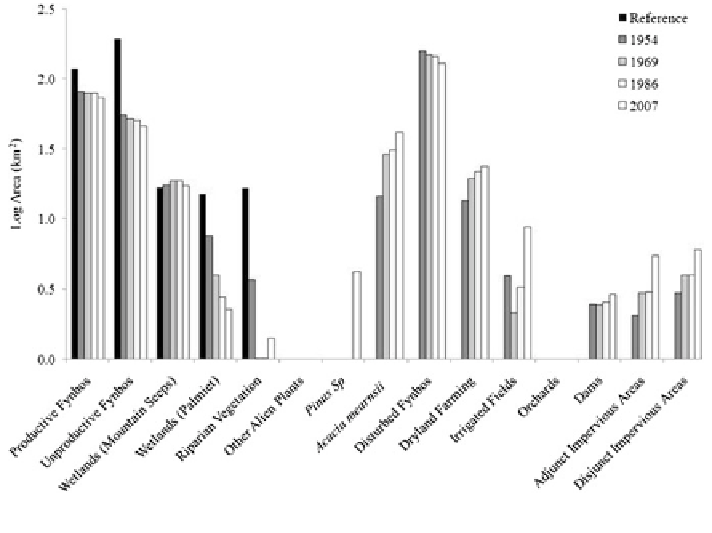Environmental Engineering Reference
In-Depth Information
Fig. 16.11
Land-cover change in the Kromme Catchment from before 1954 to 2007
frequency (Fig.
16.11
) Mountain seep wetlands have remained relatively
unchanged over time, although they have become invaded by alien plants in some
places. The most significant changes are in the relatively fertile floodplains which
were dominated by palmiet wetlands. These wetlands have largely been replaced
by agriculture, both irrigated and dryland, and also to a large extent by Black
Wattle invasion. Black Wattlehas also invaded ravines, replacing indigenous
Afromontane forest.
16.3.2.1 Urban Sprawl
The infrastructure of the town of Kareedouw has increased steadily from 1954 to
the 1980s, however there is a dramatic change between 1986 and 2007
(Fig.
16.12
). This is the result of the ending of the Apartheid Regime in South
Africa in 1994, which brought in new land tenure and labour laws, leading to a
movement of people from farms into nearby towns. During this time, four new
townships were established around Kareedouw. Black Wattle invasion increased
steadily from 1954 to 2007. The palmiet wetlands in close proximity to the town
had completely disappeared by 2007.

Search WWH ::

Custom Search